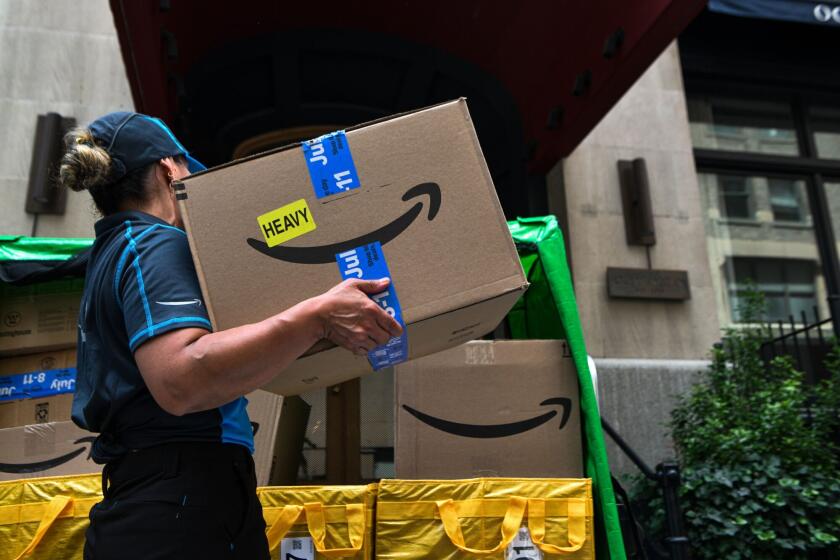Xerox Breaks Into the Japanese Market : Industry: The company almost lost its prominence in its field, but a renewed commitment to quality and service brought it back from the brink.
- Share via
ROCHESTER, N.Y. — A decade after Japanese competitors threatened to knock Xerox Corp. out of the copier industry it created, Xerox has scored an impressive comeback.
Not only is Xerox still making copiers, it’s selling them to Japan.
The copier company’s first large-scale foray into the Japanese market, the Xerox 5100, is selling well in Japan and elsewhere. That’s an accomplishment some other U.S. businesses--such as the Big Three auto companies--might well envy.
“Xerox is one of the few American companies that has looked the Japanese tiger in the eye, come close to being gobbled up, and come back to a position of prominence,” said Burt Meerow, president of Buyer’s Laboratory Inc., an independent testing agency. “Their technological lead is unquestioned.”
The transformation of Stamford, Conn.-based Xerox began in the late 1970s, after its copier patent expired and it found itself rapidly losing market share.
While Xerox never lost its near-monopoly in high-end copiers, it lost market share in low-cost machines, mainly to Japanese makers. Today it has only about 14% of the low-end market, although that’s up from 10% in 1985, said Lynn Ritter, an analyst with Dataquest Inc. in San Jose.
Xerox has about a 90% market share of the very biggest, most profitable machines, Ritter said.
Xerox officials say the company fought back by putting a renewed emphasis on quality: paying attention to what customers wanted and guaranteeing its products were reliable and easy to use.
To ensure Xerox products met the highest standards, the company began a process called competitive bench-marking: visiting other firms, such as L. L. Bean and Toyota, which excelled in various business processes such as distribution or warehousing, to study their practices.
The quality movement wasn’t always easy, but in the end it paid off. In 1989, Xerox won the Malcolm Baldrige National Quality Award. It also won back customers. Today, Xerox is once again widely respected at home and abroad as the leader in its field.
“This is an industry that the United States invented. Had it not been for the work of Xerox, it would have been lost to the Japanese,” Meerow said.
Xerox made its first large-scale foray into the Japanese market last year with the 5100. But before tackling that market, Xerox engineers spent nearly four years developing the product.
Chief engineer Daniel W. Cholish brought in engineers from Fuji Xerox Co., Xerox’s joint venture in Japan, “to make sure we understood customer needs and got it right.”
Cholish and other Xerox officials also paid personal calls on potential customers in Japan, overcoming language and cultural barriers to get firsthand knowledge of what they wanted and why high-volume copiers so far had only limited acceptance in that country.
Xerox found that Japanese offices needed copiers that could reproduce kanji-- fine, handwritten Japanese characters--and could handle the lightweight and oversized papers more often used in that country, Cholish said. The machines also had to display instructions in Japanese.
Most important, the machines had to meet the differing needs of Japanese, European and American markets without requiring significant modifications, he said.
Once the 5100 was developed, its marketing was turned over to Fuji Xerox, a well-established and respected company in Japan. “You almost need a Japanese partner to establish your marketing organization,” Cholish said.
Xerox is now developing other machines that will also be exported to Japan, Cholish said.
Xerox officials said they believe that there’s a message in their experience for other U.S. companies.
“We can be successful in all markets, specifically Japan,” said A. Barry Rand, president of Xerox’s U.S. Marketing Group. “Our success has been dependent on our quality processes and our focus on customer satisfaction. That’s infiltrated the whole company and affected everything we do.”
More to Read
Inside the business of entertainment
The Wide Shot brings you news, analysis and insights on everything from streaming wars to production — and what it all means for the future.
You may occasionally receive promotional content from the Los Angeles Times.








